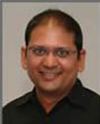Distributed Energy Resource Integration Standards for Smart Grid Applications
By Michael Emmanuel, Ramesh Rayudu and Ian Welch
In order to maximize the full value of Distributed Energy Resources (DERs) such as grid capacity expansion, provision of environmentally responsible energy and ancillary services while retaining power network reliability, there is a critical need for adherence to common functional technical requirements and specifications relevant to the effective operation and performance of the next-generation grid. This will not only simplify implementation at reduced costs but will ensure multi-vendor interoperability, improved security and reduced time-to-market.
The current energy transition as a result of the proliferation of renewable and non-renewable distributed energy resource (DER) units from various vendors calls for globally accepted standards to ensure seamless interconnection and interoperability with the conventional electric power system (EPS). This, coupled with the fact that the electricity grid is operationally and technically complex, makes it vital that a universal standard to be adopted by all stakeholders such as the utility, authorities having jurisdiction (AHJ) over the grid and DER manufacturers in order to maintain the grid reliability. Conformity to standards is essential to realizing increasing penetration of utility interactive DERs without compromising the reliability and effective operation of the grid.
Also, the quest for interoperability between field grid devices and then, with the grid creates challenges and opportunities such as defining common grid support functions, communication standards and protocols for remote dispatch, monitoring and controlling of utility interactive DER devices. This will eventually simplify their implementation and management in both stand-alone and grid-connected use cases. Consequently, AHJs, utilities, energy service providers and DER manufacturers are confronted with the demand to have a universal standard which specifies the control and communication interfaces for DER units.
The popular IEEE 1547-2003 suite of standards and 2014a amendment 1 continue to underpin the development of the DER technologies integration with the EPS. They provide guidelines for conformance testing, monitoring and controlling, design and operation, and conducting distribution impact studies of DER interconnection with the grid. Further, a major part of the amendment (IEEE 1547a-2014) now permits DER to be actively involved in voltage regulation via real and reactive power variation under a mutual agreement between the EPS and DER operators. Moreover, in conjunction with IEEE 1547.1 is the supplementary standard, Underwriters Laboratories (UL) 1747, which provides requirements for inverters, converters and controllers used as grid interfaces for grid-connected DERs.
However, as the grid evolves with DER penetration and spatial distribution, adding communication and information systems has become critical to enable an automated and a more intelligent power system. There are a number of standards that deal with utility automation, energy efficiency, interoperability and integration interfaces between DERs and the EPS such as International Electrotechnical Commission (IEC) 61850 and IEEE 2030 suites. A unified perspective of the interoperability criteria from three major integrated domains which include power, communication and information systems is presented in the IEEE 2030 smart grid interoperability reference model (SGIRM). This reference tool provides technical specifications for interfaces between functional segments of the electricity grid, considering perspectives from each of the domain, and also shows the relationships among the power grid domains such as the data characteristics that flows between them.
Furthermore, considering a grid-connected photovoltaic system as a typical example of DER, there are other relevant standards that deal with integration issues such as operational performance evaluation (IEC 61724), island prevention measures (IEC 62116), commissioning tests (IEC 62446) and characteristics of the utility interface (IEC 61727).
Another evolving DER integration standard is the smart grid interoperability panel’s (SGIP) open field message bus (OpenFMB), which defines a reference framework designed to enable field grid devices (such as inverters, meters and reclosers) to communicate with each other seamlessly with low latency. The OpenFMB framework provides a flexible interaction between distributed intelligent nodes on the emerging smart grid, which in turn manage DERs that communicate through common semantic definitions, (such as the common information model (CIM) IEC 61968/70) and process data locally for control and reporting.
In addition, this standards-based solution underpins the evolving field grid devices interoperability in a scalable peer-to-peer publish/subscribe (pub/sub) architecture. Without the need to reinvent the wheel and perform rip-and-replace, the OpenFMB uses existing standards, resources and architectural patterns (where possible) to minimize its implementation complexity and cost of integration. Also, its application provides a platform for field grid devices machine-to-machine communication to support operations or use cases such as unintentional islanding, island to grid-connected mode resynchronization and utility interactive or stand-alone microgrid optimization. Moreover, as part of the SGIP’s Energy Internet of Things (IoT) initiative, the openFMB provides specifications for field grid devices to take advantage of its non-proprietary and flexible architecture comprising internet protocol (IP) networking, IoT messaging and pub/sub protocols, and IEC CIM data modelling structures.
A pioneer example of the OpenFMB reference implementation is the Duke Energy’s Coalition of the Willing (COW-II) initiative deployed in the Mount Holly microgrid test bed and developed as a result of a profound collaboration with 25 vendors. This initiative shows a plug-and-play integration of state-of-the-art solutions from these vendors with little delay in microgrid optimization use cases by deploying various wireline and wireless communications technologies.
The long term evolution of DERs and microgrid integration standards for the next-generation grid provides cutting-edge benefits such as flexibility in the management of the bidirectional power flow, improved security, interoperability of field grid devices and reduced time-to-market for DER manufacturers and other stakeholders. These standardization requirements to enable DERs, smart inverters, microgrid and other grid-edge nodes to interact seamlessly with the grid are pivotal to maximizing their aggregate benefits and timely realization of the evolving smart grid. In addition, these standards and guidelines would not only simplify the implementation of smart grid applications at reasonable costs, but also ensure safety, improved system reliability, upgradeability and scalability.
For a downloadable copy of October 2016 eNewsletter which includes this article, please visit the IEEE Smart Grid Resource Center.
Contributors

Michael I. Emmanuel, a student member of IEEE, is currently a Ph.D. student at Victoria University of Wellington, New Zealand, with research interests in DERs integration and smart grid communication networks. He has a B.Sc degree in electrical/electronic engineering from the University of Ibadan, Nigeria and an M.Eng. degree in electronics and telecommunications engineering from Jadavpur University, India.

Ramesh K. Rayudu, an IEEE Senior Member, is currently a senior lecturer at Victoria University of Wellington, New Zealand. He is the general chair for the 2017 IEEE Power & Energy Society Innovative Smart Grid Technologies Asia (ISGT Asia) conference, New Zealand. He holds a B.E. (First Class–Distinction) from Osmania University (India), an M.E. from the University of Canterbury (NZ) and a PhD in AI and power systems engineering from Lincoln University (NZ).

Ian Welch is a senior lecturer at Victoria University of Wellington and the programme director for the Network Engineering Programme. His current research focuses on web browser security, network security, human aspects of information security and programmable networks. He is a member of the New Zealand Internet Task Force and a mentor for the Google Summer of Code. He has a PhD and MSc from the University of Newcastle upon Tyne and a bachelor's degree in commerce from Victoria University.
To have the Bulletin delivered monthly to your inbox, join the IEEE Smart Grid Community.
Past Issues
To view archived articles, and issues, which deliver rich insight into the forces shaping the future of the smart grid. Older Bulletins (formerly eNewsletter) can be found here. To download full issues, visit the publications section of the IEEE Smart Grid Resource Center.




